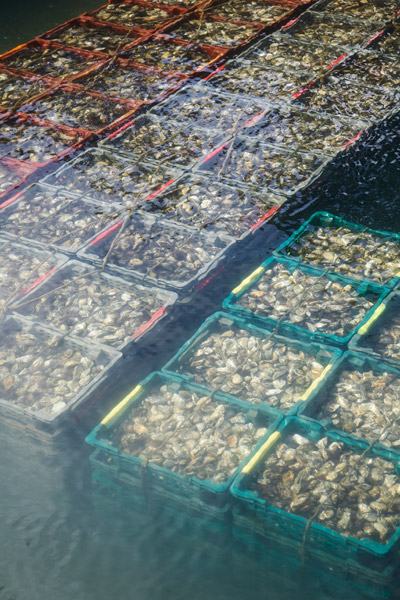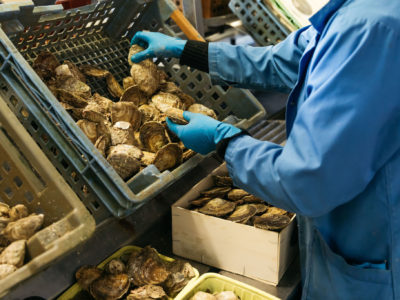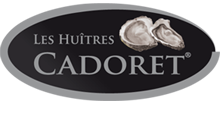Huître plate, la Bélon
The oyster “Plate du Bélon” is a 3-years old oyster originated from deep-sea water in the Atlantic North East. Then, this typical oyster is refined first in Carantec foreshore and then in the Bélon River for 2 months, during which it acquires its particular taste of “Bélon River”, famous all around the world and coveted by the greatest Chefs.
.
Rock oyster, Fine de Bretagne
Fine de Bretagne
This “Fine de Bretagne” is a 3-years old oyster from deep-sea waters cultivation in the wild and preserved Bay of Carantec in Brittany. This ancestral cultivation revealed the subtle oceanic and wild taste of our oysters.
.
Rock oyster, Spéciale de Bretagne
La spéciale de Bretagne
Rock oysters reared in deep waters, and then refined in upper parks in Carantec for several months, to perfect their gustative qualities and give them a crunchy meat. This refining method has been transmitted and improved among 5 generations of oyster farmers.
.
.
Rock oyster, Perle Noire
La perle noire
The Special oysters “Perle Noire” cultivated in the best oyster farms in France for 4 years and then refined in the Belon river for 8 months, during which they acquire their characteristic nutty taste and their crunchy and sweet meat.
.
The Maison Cadoret also selected
oysters from Marennes Oléron :
La Fine Claire
de Marennes-Oléron
Rock oysters reared in the West Coast of France and then refined in “Claires”. According to season, they may reveal a green color.
La Label
Rouge
Meaty and crunchy, they come from park in Utah Beach in Normandie and are then refined in the Claires of Marennes-Oleron for 3 months to optimize their typical smooth taste.
La pousse
en Claire
These Special Oysters are recognized by their round shape, their pearly and sweet meat, perfect for subtle palates.
The Oyster life
The oyster spat (“oyster babies”) starts the growth in oyster bags in the Carantec foreshore,
where it discovers the tides cycle. 2 cultivation types are carried out: the off-bottom cultivation in oyster bags
and the traditional on-bottom cultivation.
The young oysters are rapidly transferred in deep water of the Carantec Bay, for on-bottom
cultivation according to ancestral tradition. This cultural technic needs a lot of manpower and know-how,
but gives the best product with a typical and perfect shell, reflecting the environment.
The oysters are harvested with dredger boats.
The oyster farmers keep an eye on their production, and take the greatest care of the oysters
during 3 to 4 years before the harvesting for commercialization.










